-
 Bitcoin
Bitcoin $107,467.9126
1.26% -
 Ethereum
Ethereum $2,447.5288
-0.12% -
 Tether USDt
Tether USDt $1.0005
0.00% -
 XRP
XRP $2.1921
0.13% -
 BNB
BNB $647.2897
0.50% -
 Solana
Solana $144.8627
-0.37% -
 USDC
USDC $0.9996
-0.03% -
 TRON
TRON $0.2732
0.10% -
 Dogecoin
Dogecoin $0.1652
-0.18% -
 Cardano
Cardano $0.5700
-2.87% -
 Hyperliquid
Hyperliquid $37.0274
-1.81% -
 Bitcoin Cash
Bitcoin Cash $484.6957
0.19% -
 Sui
Sui $2.7354
-2.19% -
 Chainlink
Chainlink $13.1727
-1.49% -
 UNUS SED LEO
UNUS SED LEO $8.9978
-0.04% -
 Stellar
Stellar $0.2421
-2.33% -
 Avalanche
Avalanche $17.5633
-3.51% -
 Toncoin
Toncoin $2.8476
-1.94% -
 Shiba Inu
Shiba Inu $0.0...01166
-0.56% -
 Litecoin
Litecoin $85.1071
0.09% -
 Hedera
Hedera $0.1502
-2.96% -
 Monero
Monero $310.2774
-1.64% -
 Dai
Dai $0.9999
-0.01% -
 Polkadot
Polkadot $3.3584
-1.88% -
 Ethena USDe
Ethena USDe $1.0003
-0.04% -
 Bitget Token
Bitget Token $4.4443
2.90% -
 Pi
Pi $0.6242
14.04% -
 Uniswap
Uniswap $6.9774
-2.86% -
 Pepe
Pepe $0.0...09535
-5.05% -
 Aave
Aave $256.7574
-3.35%
Does the right bottom volume of the double bottom pattern have to be lower than the left bottom?
Scientists discover new species of deep-sea coral thriving in extreme conditions, offering insights into marine biodiversity and resilience.
Jun 26, 2025 at 03:49 pm
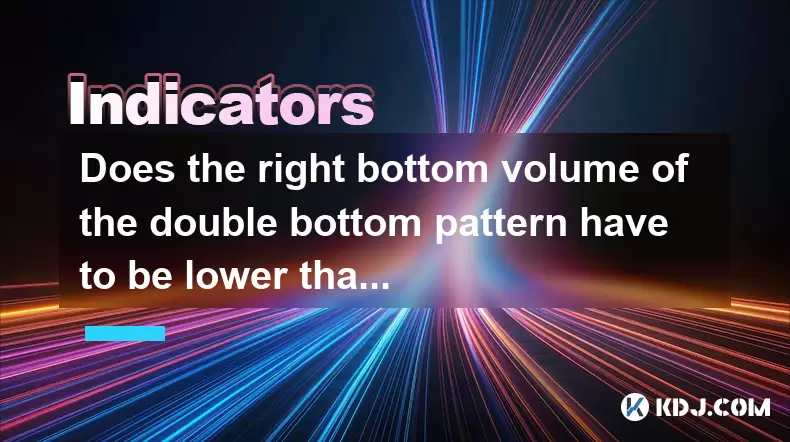
Understanding the Double Bottom Pattern in Cryptocurrency Trading
The double bottom pattern is a commonly observed reversal pattern in technical analysis, especially within cryptocurrency trading. It typically signals a shift from a downtrend to an uptrend and consists of two distinct lows that are roughly equal, separated by a peak. This formation is crucial for traders looking to identify potential buying opportunities after a prolonged bearish phase.

In this context, one of the most frequently asked questions relates to volume: does the right bottom volume have to be lower than the left bottom?
The Role of Volume in Confirming the Double Bottom Pattern
Volume plays a critical role in confirming the validity of chart patterns, including the double bottom. While the price action forms the structure of the pattern, volume acts as a supporting indicator that can provide insights into market sentiment and participation.
When analyzing the double bottom, traders often pay attention to the volume levels at each bottom. The idea is that during the first decline (left bottom), panic selling might cause a spike in volume. Then, when the second decline occurs (right bottom), if the volume is significantly lower, it could indicate that sellers are losing momentum and buyers are starting to step in.
Does the Right Bottom Volume Need to Be Lower?
The short answer is: no, the right bottom volume does not necessarily have to be lower, but it is generally preferred for confirmation purposes. In many cases, experienced traders look for lower volume on the second bottom as a sign of weakening bearish pressure. However, there are exceptions where the right bottom may exhibit similar or even higher volume due to factors like increased interest or volatility.
What's more important is how volume behaves after the neckline breakout. A strong rally with high volume following the second bottom increases the likelihood that the pattern is valid and that the trend reversal is genuine.
How to Visually Identify the Double Bottom Pattern
Identifying a double bottom involves several key components:
- First Trough (Left Bottom): A significant low formed during a downtrend.
- Peak Between Troughs: A resistance level that separates the two bottoms.
- Second Trough (Right Bottom): A second low that is approximately equal to the first.
- Neckline: A horizontal or slightly sloping line connecting the highs between the two troughs.
- Breakout Above Neckline: Confirmed when price moves above the neckline with increased volume.
Here’s a breakdown of how to visually inspect the pattern:
- Locate a clear downtrend preceding the formation.
- Identify two distinct lows that are relatively close in price.
- Ensure there is a visible peak separating the two bottoms.
- Draw a neckline connecting the highest point between the two troughs.
- Wait for a confirmed breakout above the neckline with rising volume.
Volume Behavior During the Formation of Each Bottom
Analyzing the volume behavior during the formation of each bottom provides deeper insight into the strength of the reversal signal:
- Left Bottom Volume: Typically exhibits higher volume due to continued selling pressure and fear among traders.
- Right Bottom Volume: Ideally shows lower volume, indicating that sellers are exhausted and buyers are beginning to take control.
- Breakout Volume: Should be strong and noticeable, ideally surpassing the average volume over the past 20 periods.
If the right bottom has higher volume, it doesn’t automatically invalidate the pattern, but it should be interpreted carefully. High volume during the second bottom could suggest aggressive buying or a sudden reaction to news, which may still support a bullish reversal.
Trading the Double Bottom Pattern Using Volume Confirmation
To trade the double bottom effectively, follow these steps:
- Step 1 – Identify the Pattern: Look for two distinct lows with a peak in between on any time frame relevant to your strategy.
- Step 2 – Draw the Neckline: Connect the high between the two bottoms to establish the neckline resistance.
- Step 3 – Monitor Volume: Observe whether the right bottom has lower volume compared to the left bottom, and check for increasing volume on the breakout candle.
- Step 4 – Enter the Trade: Enter a long position once price closes above the neckline with confirmed volume.
- Step 5 – Set Stop Loss: Place a stop loss just below the lowest of the two bottoms to manage risk.
- Step 6 – Target Profit: Measure the distance from the neckline to the bottom of the pattern and project it upward from the breakout point to estimate the profit target.
This method allows traders to incorporate both price action and volume for better accuracy in timing entries and exits.
Frequently Asked Questions (FAQ)
Q: Can the double bottom pattern appear on intraday charts in crypto trading?
Yes, the double bottom can appear on all time frames, including 1-hour, 4-hour, and daily charts. Traders use it across different strategies, from scalping to swing trading.
Q: Is it necessary for both bottoms to be exactly the same in price?
No, they don’t need to be identical. As long as the two lows are approximately equal without a significant gap, the pattern remains valid.
Q: What happens if the price fails to break above the neckline after forming two bottoms?
A failed breakout suggests that the pattern may not be valid, and the downtrend could continue. Traders should consider exiting or avoiding entry until further confirmation.
Q: Can volume indicators other than raw volume be used to confirm the pattern?
Yes, tools like On-Balance Volume (OBV) or Volume Weighted Average Price (VWAP) can supplement traditional volume analysis to enhance decision-making.
Disclaimer:info@kdj.com
The information provided is not trading advice. kdj.com does not assume any responsibility for any investments made based on the information provided in this article. Cryptocurrencies are highly volatile and it is highly recommended that you invest with caution after thorough research!
If you believe that the content used on this website infringes your copyright, please contact us immediately (info@kdj.com) and we will delete it promptly.
- BNB Price Check: Can Binance Coin Reserves Fuel a Rally to $800?
- 2025-06-26 20:25:12
- PEPD, Memes, and Ethereum: A New Era of Meme Utility?
- 2025-06-26 20:25:12
- DOGE, BlockDAG, and Coin Airdrops: The New Wave of Crypto Opportunities
- 2025-06-26 18:45:12
- Neo Pepe and the Crypto Presales Popping in June 2025
- 2025-06-26 18:45:12
- Bitcoin, DeFi Tokens, and Relist Moves: What's Hot in Crypto Right Now
- 2025-06-26 18:30:11
- Binance, Bitcoin, and Altcoins: Navigating the Crypto Landscape
- 2025-06-26 19:05:12
Related knowledge
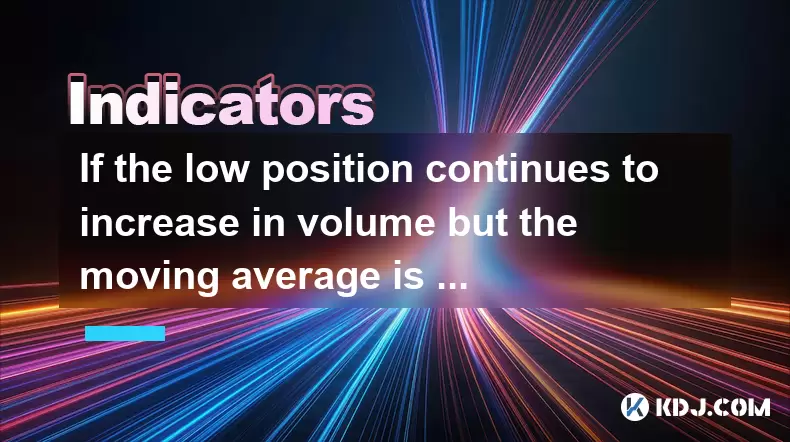
If the low position continues to increase in volume but the moving average is still short, should we wait and see?
Jun 26,2025 at 08:07pm
Understanding the Scenario: Low Position with Increasing VolumeIn the cryptocurrency market, traders often encounter situations where a particular asset is trading at a relatively low price level (referred to as a 'low position'), yet there is a noticeable increase in trading volume. This phenomenon can be confusing because it suggests that more market ...
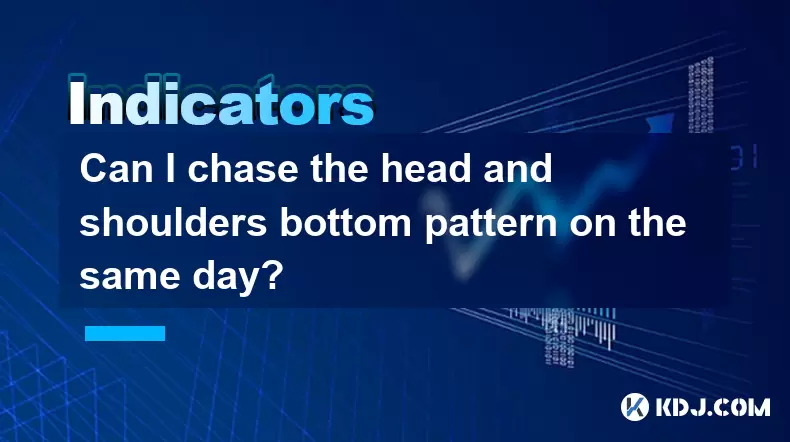
Can I chase the head and shoulders bottom pattern on the same day?
Jun 26,2025 at 06:14pm
Understanding the Head and Shoulders Bottom Pattern in Cryptocurrency TradingThe head and shoulders bottom pattern, also known as the inverse head and shoulders, is a reversal chart pattern commonly observed in cryptocurrency price charts. It signals a potential shift from a downtrend to an uptrend. The structure consists of three distinct lows: the lef...

What should I do if the 10-day line turns downward but the monthly line is still upward?
Jun 26,2025 at 08:56pm
Understanding the 10-Day and Monthly Moving AveragesIn cryptocurrency trading, moving averages are among the most widely used technical indicators. The 10-day moving average (MA) reflects short-term price trends, while the monthly moving average, often calculated over 30 days, represents long-term market sentiment. When the 10-day line turns downward, i...
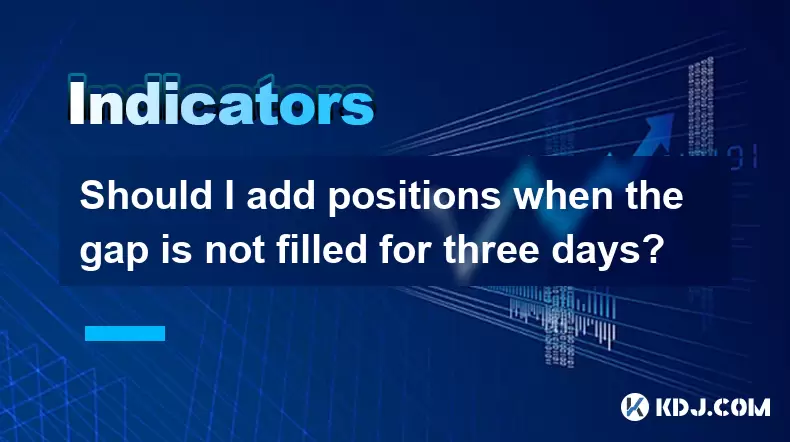
Should I add positions when the gap is not filled for three days?
Jun 26,2025 at 07:49pm
Understanding the Concept of Gaps in Cryptocurrency TradingIn cryptocurrency trading, a gap occurs when the price of an asset opens significantly higher or lower than its previous closing price, with no trading activity taking place in between. This phenomenon is common due to the 24/7 nature of crypto markets and external events such as news releases, ...
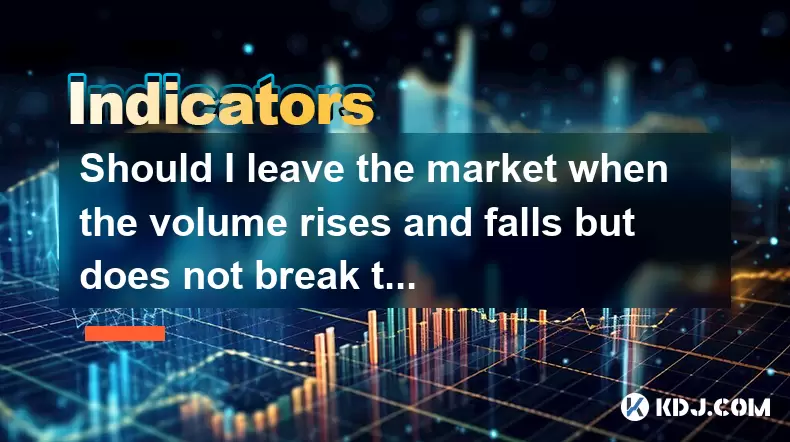
Should I leave the market when the volume rises and falls but does not break the 5-day line?
Jun 26,2025 at 06:08pm
Understanding Market Volume and the 5-Day Moving AverageWhen traders talk about market volume, they're referring to the total number of shares or contracts traded during a specific period. In cryptocurrency trading, volume plays a crucial role in confirming trends and predicting potential reversals. The 5-day moving average (5DMA) is a short-term indica...
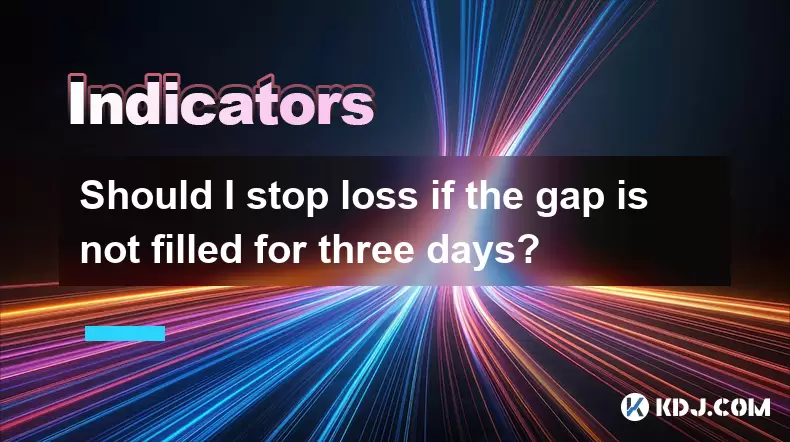
Should I stop loss if the gap is not filled for three days?
Jun 26,2025 at 06:35pm
Understanding Gaps in Cryptocurrency TradingIn cryptocurrency trading, gaps refer to areas on a price chart where the asset's price jumps from one level to another without any trading occurring at the intermediate levels. These gaps can appear due to sudden market movements, often influenced by news events, macroeconomic data releases, or shifts in inve...

If the low position continues to increase in volume but the moving average is still short, should we wait and see?
Jun 26,2025 at 08:07pm
Understanding the Scenario: Low Position with Increasing VolumeIn the cryptocurrency market, traders often encounter situations where a particular asset is trading at a relatively low price level (referred to as a 'low position'), yet there is a noticeable increase in trading volume. This phenomenon can be confusing because it suggests that more market ...

Can I chase the head and shoulders bottom pattern on the same day?
Jun 26,2025 at 06:14pm
Understanding the Head and Shoulders Bottom Pattern in Cryptocurrency TradingThe head and shoulders bottom pattern, also known as the inverse head and shoulders, is a reversal chart pattern commonly observed in cryptocurrency price charts. It signals a potential shift from a downtrend to an uptrend. The structure consists of three distinct lows: the lef...

What should I do if the 10-day line turns downward but the monthly line is still upward?
Jun 26,2025 at 08:56pm
Understanding the 10-Day and Monthly Moving AveragesIn cryptocurrency trading, moving averages are among the most widely used technical indicators. The 10-day moving average (MA) reflects short-term price trends, while the monthly moving average, often calculated over 30 days, represents long-term market sentiment. When the 10-day line turns downward, i...

Should I add positions when the gap is not filled for three days?
Jun 26,2025 at 07:49pm
Understanding the Concept of Gaps in Cryptocurrency TradingIn cryptocurrency trading, a gap occurs when the price of an asset opens significantly higher or lower than its previous closing price, with no trading activity taking place in between. This phenomenon is common due to the 24/7 nature of crypto markets and external events such as news releases, ...

Should I leave the market when the volume rises and falls but does not break the 5-day line?
Jun 26,2025 at 06:08pm
Understanding Market Volume and the 5-Day Moving AverageWhen traders talk about market volume, they're referring to the total number of shares or contracts traded during a specific period. In cryptocurrency trading, volume plays a crucial role in confirming trends and predicting potential reversals. The 5-day moving average (5DMA) is a short-term indica...

Should I stop loss if the gap is not filled for three days?
Jun 26,2025 at 06:35pm
Understanding Gaps in Cryptocurrency TradingIn cryptocurrency trading, gaps refer to areas on a price chart where the asset's price jumps from one level to another without any trading occurring at the intermediate levels. These gaps can appear due to sudden market movements, often influenced by news events, macroeconomic data releases, or shifts in inve...
See all articles
























































































